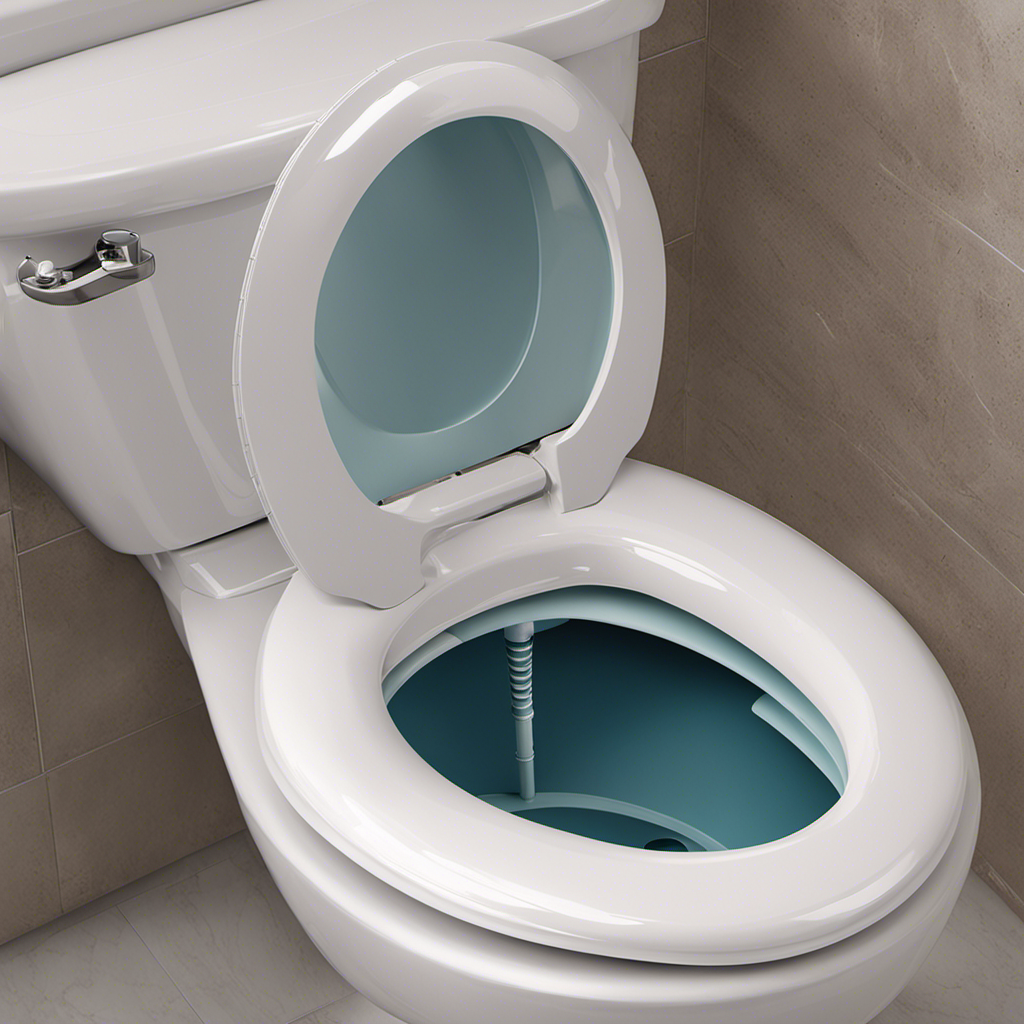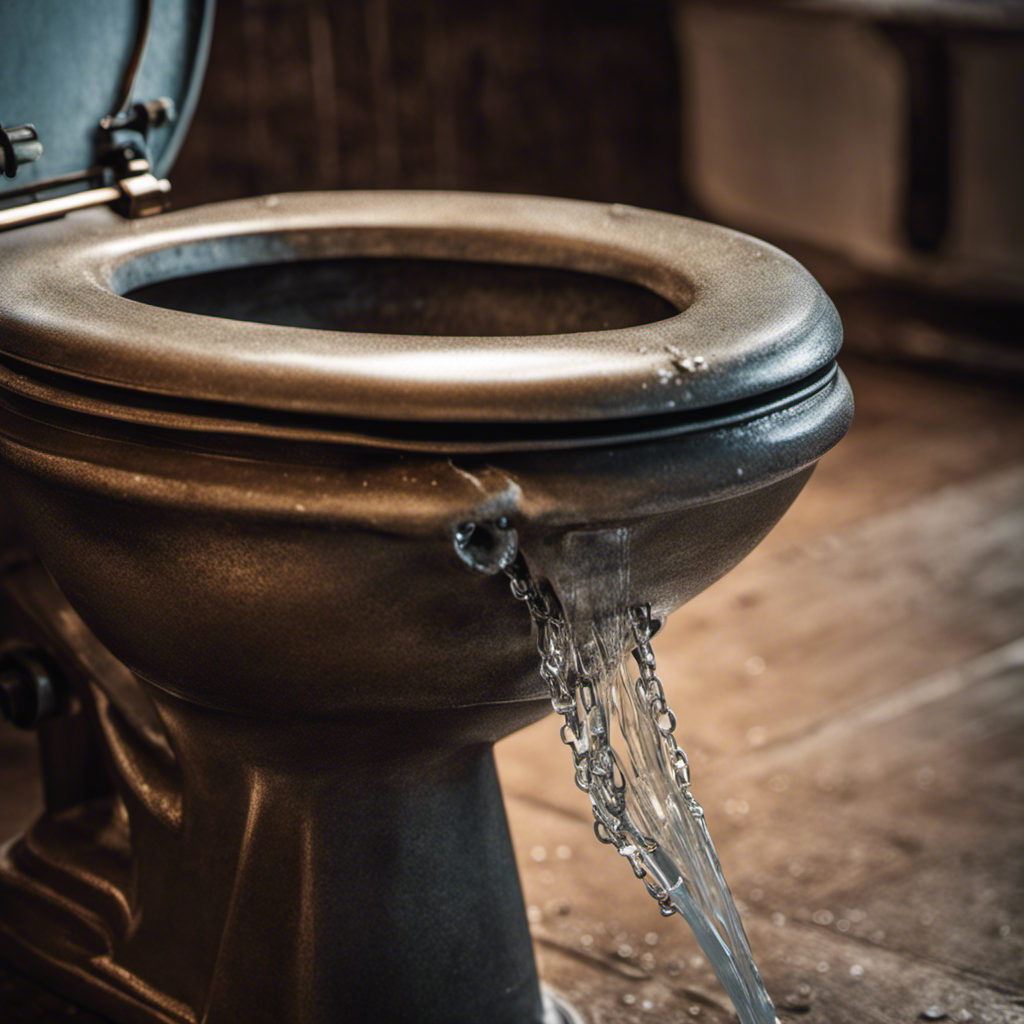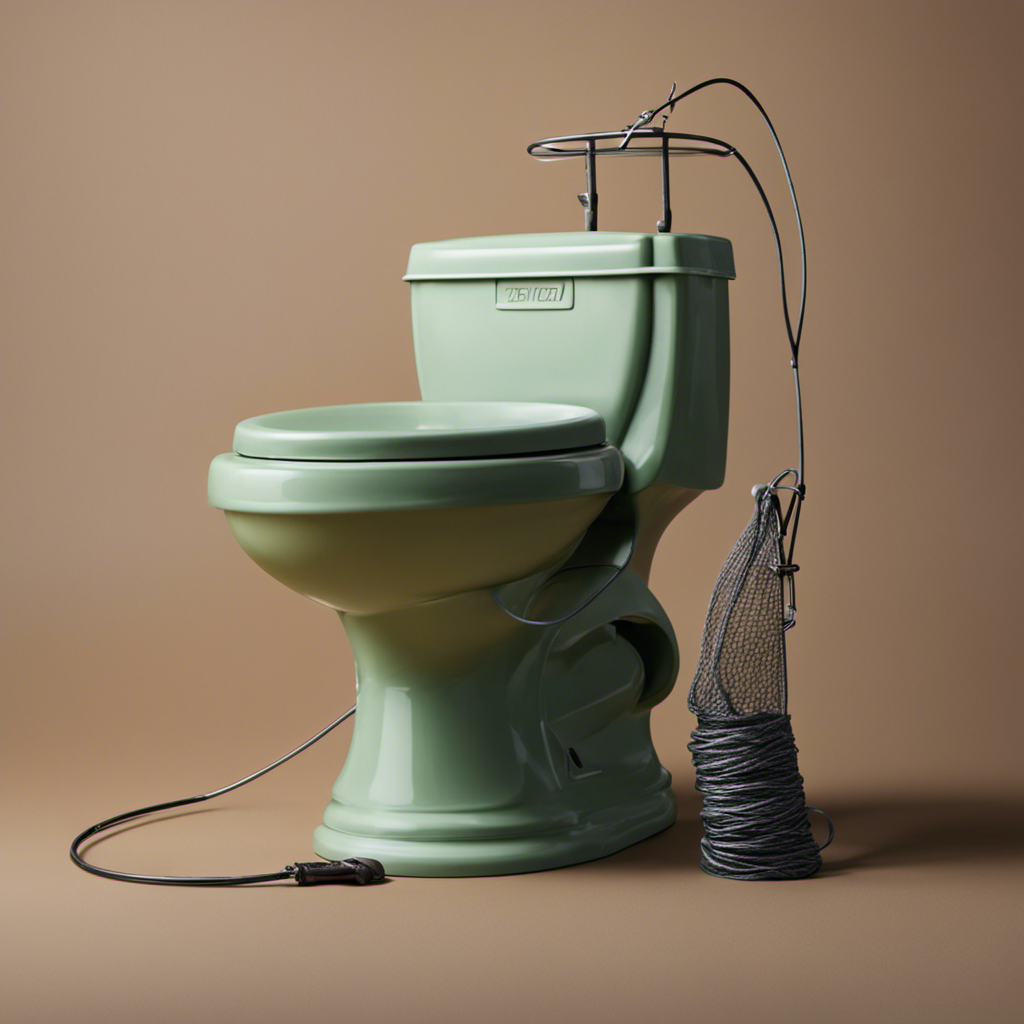As I tackled the daunting task of installing a toilet drain, I couldn’t help but feel the weight of the challenge ahead. However, armed with the right tools and a determined mindset, I soon discovered that this essential home improvement project was well within my grasp.
In this step-by-step guide, I will walk you through the process of removing the old toilet and drain, as well as installing the new one with precision and confidence. Get ready to roll up your sleeves and transform your bathroom with a brand new toilet drain.
Key Takeaways
- Proper preparation and planning are crucial before installing a toilet drain, including measuring the distance, determining the size of the drain pipe, and marking the location on the floor.
- Safety precautions such as wearing goggles and gloves should be taken during the installation process.
- Removing the old toilet and drain involves disconnecting the water supply, loosening the nuts, and scraping off the old wax ring.
- Installing the new toilet drain includes attaching the toilet flange, placing the wax ring, lowering the toilet onto the flange, and securing it with nuts and bolts.
Required Tools and Materials
You’ll need a few tools and materials to install a toilet drain. Here’s a step-by-step guide to help you with the installation process.
First, gather the necessary tools: a hacksaw, adjustable wrench, wax ring, plunger, and a bucket. You’ll also need a toilet flange, closet bolts, and a toilet bowl.
Begin by shutting off the water supply and removing the old toilet.
Next, inspect the floor flange for any damage and replace if necessary.
Install the new wax ring onto the flange, ensuring it is centered.
Carefully lower the toilet bowl onto the wax ring, aligning the holes with the closet bolts.
Tighten the nuts onto the bolts and connect the water supply line.
Preparation and Planning
Before starting, it’s important to carefully measure and plan the positioning of the new toilet drain. Following plumbing regulations is crucial to ensure proper installation.
Start by measuring the distance between the center of the toilet flange and the wall. This will determine the location of the drain pipe. Use a pencil to mark this spot on the floor.
Next, determine the size of the drain pipe required based on the plumbing regulations in your area. Measure and cut the drain pipe accordingly, ensuring a proper fit. Remember to wear safety goggles and gloves during this process.
Once the drain pipe is cut, make sure to smooth any rough edges with sandpaper. With the drain pipe in place, you can now move on to removing the old toilet and drain, as we will see in the next section.
Removing the Old Toilet and Drain
Once you’ve measured and cut the drain pipe, it’s time to move on to removing the old toilet and drain. This step is crucial in toilet drain maintenance and troubleshooting toilet drain problems. Follow these step-by-step instructions to ensure a smooth removal process.
-
Turn off the water supply: Locate the shut-off valve near the base of the toilet and turn it clockwise to shut off the water supply. Flush the toilet to drain any remaining water in the tank and bowl.
-
Disconnect the water supply line: Use an adjustable wrench to loosen the nut connecting the water supply line to the bottom of the toilet tank. Once loose, carefully remove the line.
-
Remove the toilet: Remove the nuts securing the toilet to the floor using a wrench. Lift the toilet straight up and place it on a nearby towel or plastic sheet.
-
Remove the old wax ring: Scrape off the old wax ring from the toilet flange using a putty knife. Dispose of it properly.
-
Plug the drain: To prevent any unwanted odors or debris from entering the drain, plug it with a rag or a drain plug.
By following these steps, you can successfully remove the old toilet and drain, ensuring proper maintenance and troubleshooting of your toilet drain problems.
| Step | Instructions |
|---|---|
| 1. | Turn off the water supply |
| 2. | Disconnect the water supply line |
| 3. | Remove the toilet |
| 4. | Remove the old wax ring |
| 5. | Plug the drain |
Installing the New Toilet Drain
After removing the old wax ring, it’s important to properly align and secure the new toilet in place. Here are the steps to installing the new toilet drain:
-
Install the toilet flange: Place the toilet flange over the drain pipe, ensuring it fits securely. Use screws or bolts to secure it in place.
-
Connect the toilet drain: Attach the wax ring to the bottom of the toilet bowl, then carefully lower the toilet onto the flange. Apply gentle pressure to create a watertight seal.
-
Secure the toilet: Use the provided nuts and bolts to secure the toilet to the flange. Tighten them evenly to prevent any wobbling or leaks.
-
Check for leaks: Turn on the water supply and flush the toilet to check for any leaks around the flange and drain.
-
Test the toilet: Sit on the toilet and rock back and forth to ensure it is stable. If necessary, adjust the bolts to eliminate any movement.
Testing and Finishing Touches
To ensure a stable and functional toilet, it’s important to carefully check for leaks around the flange and drain after connecting the wax ring and securing the nuts and bolts. This testing process will help identify any potential issues and allow for troubleshooting before completing the installation.
Here are some troubleshooting tips to follow during this stage:
- Fill the toilet tank with water and flush.
- Observe if any water leaks from the base of the toilet.
- Check for any leaks around the flange and drain using a flashlight.
- Tighten the nuts and bolts if necessary.
- Repeat the flushing process to ensure there are no leaks during operation.
Conclusion
After completing the installation of a toilet drain, I can confidently say that it’s a relatively straightforward process. By following the steps outlined in this guide, you can successfully remove an old toilet drain and replace it with a new one.
It’s important to carefully plan and prepare before starting the project and to use the necessary tools and materials. Remember to test the new drain thoroughly to ensure its functionality.
Overall, with a little patience and attention to detail, anyone can install a toilet drain with ease.










